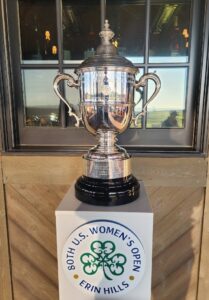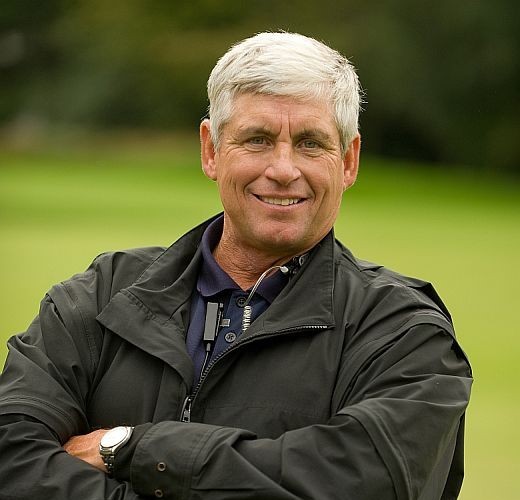
The lineage of designers and Supers who have come through 450 Ardmore rd in the past century is basically a who’s who in American golf.Hugh Wilson designed what Jack Nicklaus once deemed “acre for acre Merion might be the best test of golf in the world”.William Flynn (Shinnecock designer) was on hand to help with the finished product on the East course and went on to become Merion’s first caretaker, before continuing on as one of the most influential course designers of all time.
Flynn’s right-hand man (and construction foreman of Merion), was Italian immigrant Joseph Valentine. Mr.Valentine became the man who took Merion’s turf and Agronomy in general to a whole new level (he is credited with creating the foundation of perhaps the world’s finest Turfgrass program at Penn State University, at the Joseph Valentine Turfgrass Research Center). After over half a century at Merion and 46 years at the helm, he turned it over to his son Ritchie in 1962 who held the standards up for another 27 years.
The very first of these features is a man who has the honor of preserving and presenting one of the most revered parcels of real estate in the history of the game: Merion Golf Club, in Ardmore, Pennsylvania.
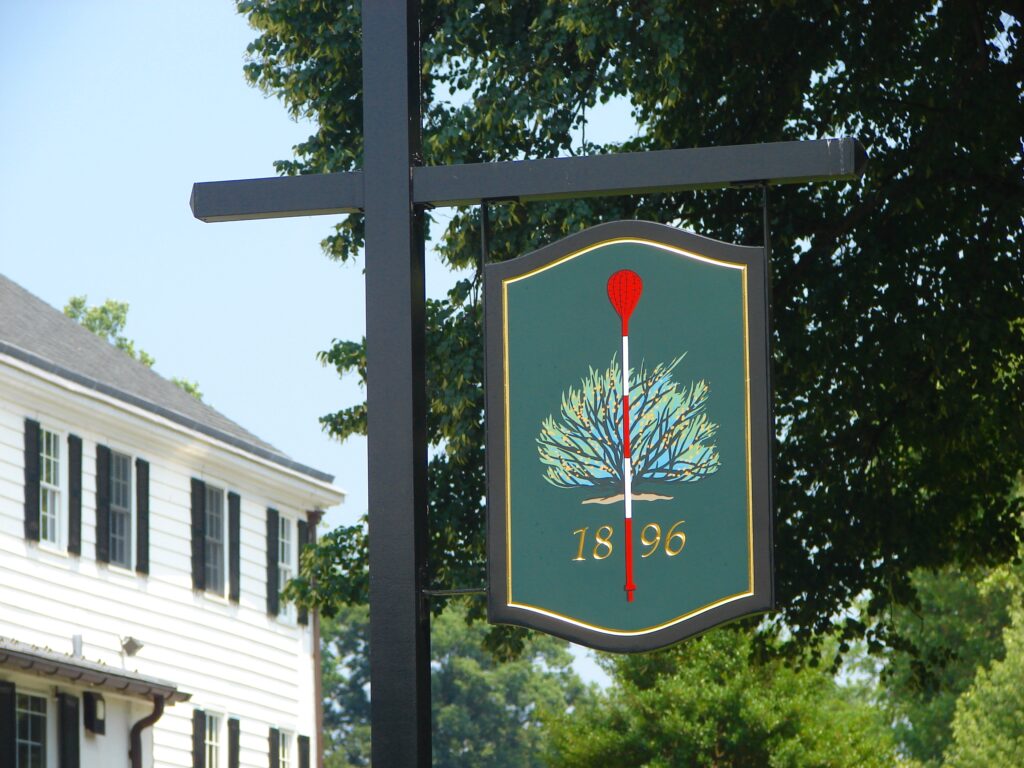
On July 4th, I was lucky enough to spend some time with the man in charge of the land under the wicker baskets: Matt Shaffer.
Shaffer clearly knows the lineage of his predecessors, and he wears it well … he is a graduate of the Penn State Turfgrass program (1974) and has worked at numerous clubs around the nation, not the least of which is Augusta National Golf Club. In his decade at Merion, Matt and his staff have prepared the East Course for a U.S Amateur (2005) and a Walker Cup (2009), but not since 1981 has Merion hosted a professional Championship.In 2013, the best players in the world will return to Merion for the U.S Open.
LN: Supers and Grounds personnel are known for working large amounts of hours, what are your hours during a typical week?
MS: Usually I’m here about 72 hours a week, six 12hour days . . . some of the other guys like Arron McCurdy our Superintendent work over 80 hours.


LN: Merion is hosting the Open here in 2013, what sort of course preparations will you do prior to the event?
MS: The usual things like extending a few tees and narrowing fairways, which will change some of the clubs players choose from the tee box on many holes (on #2 Shaffer showed me where the new rough line would start . . . good luck hitting that fairway with a driver). We may modify a green or two, and firm the place up a bit, but the club and its members are determined to challenge the best players in the world as it has always been here, at under 7,000 yards.


LN: Why did you come to Merion?
MS: Merion is the perfect fit for me, I’ve had opportunities to go other places, but have turned them down . . . because it just didn’t feel right.
LN: It’s clear that Merion is not your typical American golf course . . . how is Merion compared to the typical American club?
MS: They (Merion) have the same mentality as I do, I’m an edgy guy. We’re all about playability, if it looks good that’s great, but we are not going to compromise playing conditions for aesthetics.
LN: Do you think Americans are influenced by TV and infatuated with lush and green?
MS: Yes, I was overseas in Scotland talking to the Superintendent of a links course, I asked him about fertilizer use, how often he feeds the turf. He could not remember ever using it, so he calls his father over (who was the Super for decades previous), his Dad thought long and said “never needed to fertilize”. I was blown away by that answer. Of course that’s not the case over here, Rick and I (at Pine Valley) spend alot to make it look as natural as possible.
LN: How big is the property here?
MS: It’s tiny, the entire facility is 121 acres – the East Course itself is 94 acres
LN: Tell me about course designer Hugh Wilson?
MS: He only designed three courses, the two here at Merion and another down the street called Cobb’s Creek. Wilson went overseas to Scotland to study course design, he brought Flynn in to be his construction manager, Flynn brought Joe Valentine, they were responsible for some of the bunkering you see today.
LN: When were some of those changes made?
MS: Probably in the early twenties, Wilson was very sick when he was
working on the West Course.
MS: (Shaffer flips roles) Tell me, what’s the best course in Florida in your opinion?
LN: Without a doubt to me it would have to be Jupiter Hills, it has everything . . . surprising elevation (for South Florida) just off the ocean, a magnificent George Fazio design and has an amazing natural feel. The clubhouse is worth seeing as well. TPC Sawgrass is the hardest.
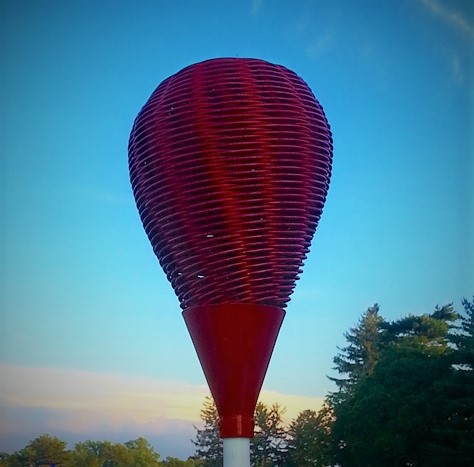

LN: The wicker baskets are an iconic symbol of Merion, who makes them?
MS: they are actually made in North Carolina, because of the cost we have to collect them every night (Miguel Crespo is the caretaker of the wicker baskets).
LN: Tell me about the new maintenance facility.
MS: We moved in just about a year ago, my old office was up there at the clubhouse (about a long par 4 away), but my guys were down here, being with them constantly has had a positive impact on our operation. With the new facility, we pretty much can do it all, the old facility had limitations. (The clock in the breakroom counts down the days and hours till the 2013 U.S Open)
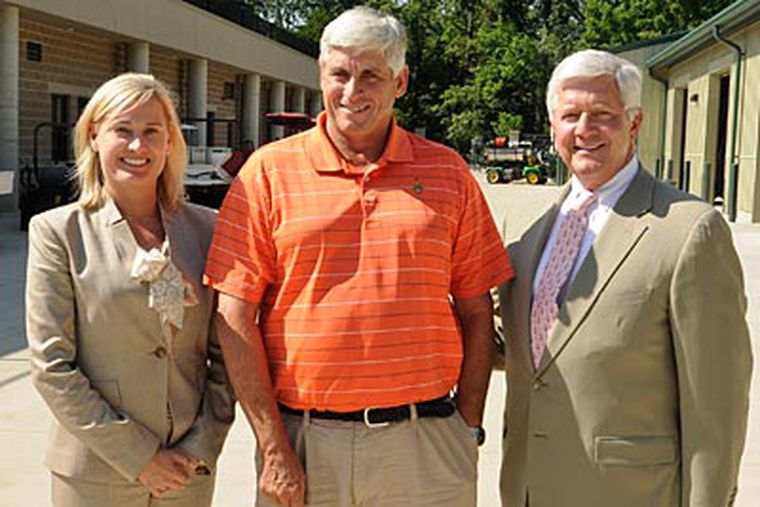

The new facility also serves as a great learning area and dormitory for Merion’s famous intern training program . Other green features include a closed system for recycling of water used for cleaning equipment and a closed mixing and recapture system protecting the fertilizer, as well as a chemical building that ensures total capture and containment of any spill and zero discharge into the environment.
Even the roof is green. Literally. The building is constructed partially underground, so the roof appears as an extension of fescue rough adjacent to the 18th tee.
In fact “just a stone’s throw” from behind Matt’s office sits the very spot from where the plaque commemorates Hogan’s famous 1 iron shot into the 72nd hole of the 1950 U.S Open, Hy Peskin’s photo has been the most published in golf history (below).
After meeting Arron McCurdy, the Super of the East Course (Matt Shaffer’s official title is Director of Course Operations), Shaffer took me on a tour of the famous 18. After showing me the new tee boxes and where future modifications for the Open will occur, we settled for a chat on the 11th tee (I hadn’t realized the significance of the spot until moments later).
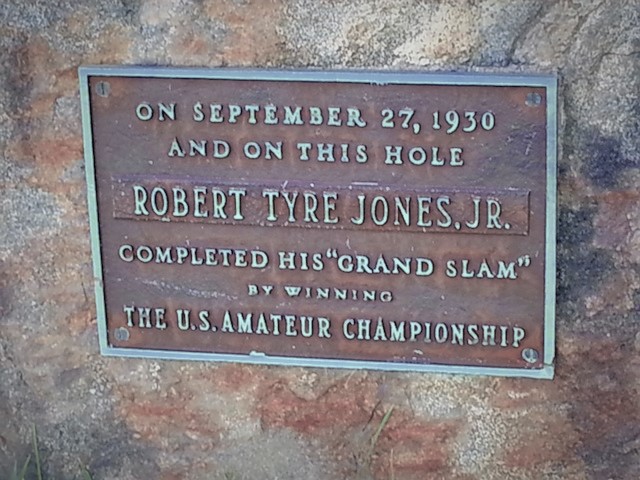
MS: This is the 11th hole, a short little par 4, it’s not a driver hole. Do you see the little creek guarding the green down there?
LN: Yeah, it’s a gorgeous little hole . . . looks like a hybrid or long iron off the tee?
MS: It’s only 349 yds, but do you realize the significance of this hole? (not waiting for an answer, he continues)
This is the hole where Bobby Jones captured the Grand Slam in 1930.
LN: Wow, that’s right, amazing! (instantly I had chills, and as I’m soaking at the moment, Shaffer forms the perfect segue)
MS: So, do you think Tiger will ever get it back?
LN: (kinda surreal, talking about Tiger on the tee box where Robert TyreJones Jr won the Grand Slam, but I snap out of it and re-engage) Not sure Matt, I think he will definitely win again, but passing Nicklaus’ 18 majors is looking really tough right now. He’s young enough, I think he still has a shot.


We went on and toured the rest of the East Course, and I thanked Matt for granting us access to his operation. Just like the great men who tended for its grounds previously, Matt Shaffer and Merion are the perfect fit. To see a video of Merion from my friends Jamie & Michael of New Zealand (pureGolf2010), they were guests there on July 4th, 2010. (coincidentally a year to the day of this interview with Mr.Shaffer) Click below:

